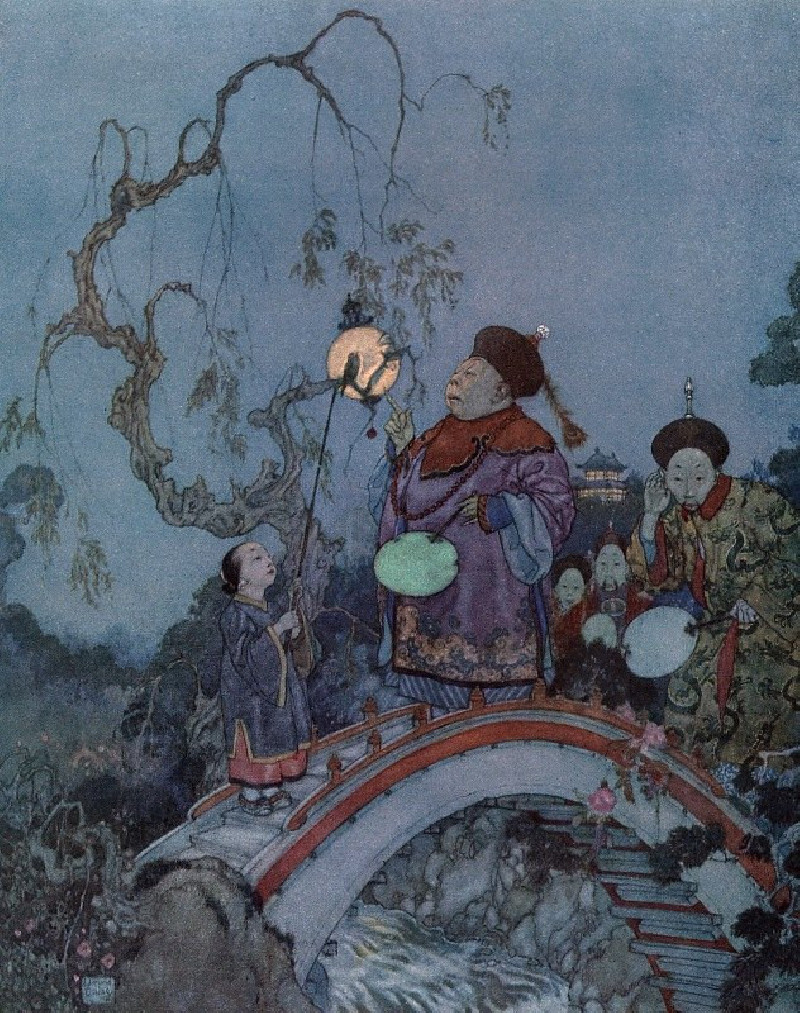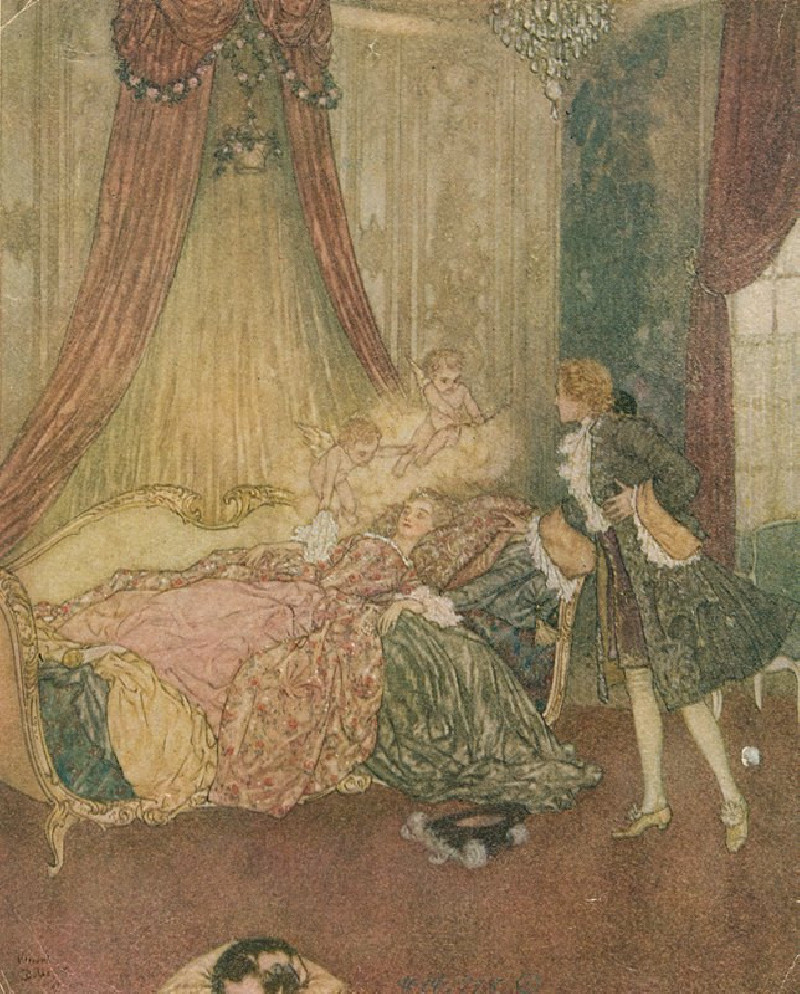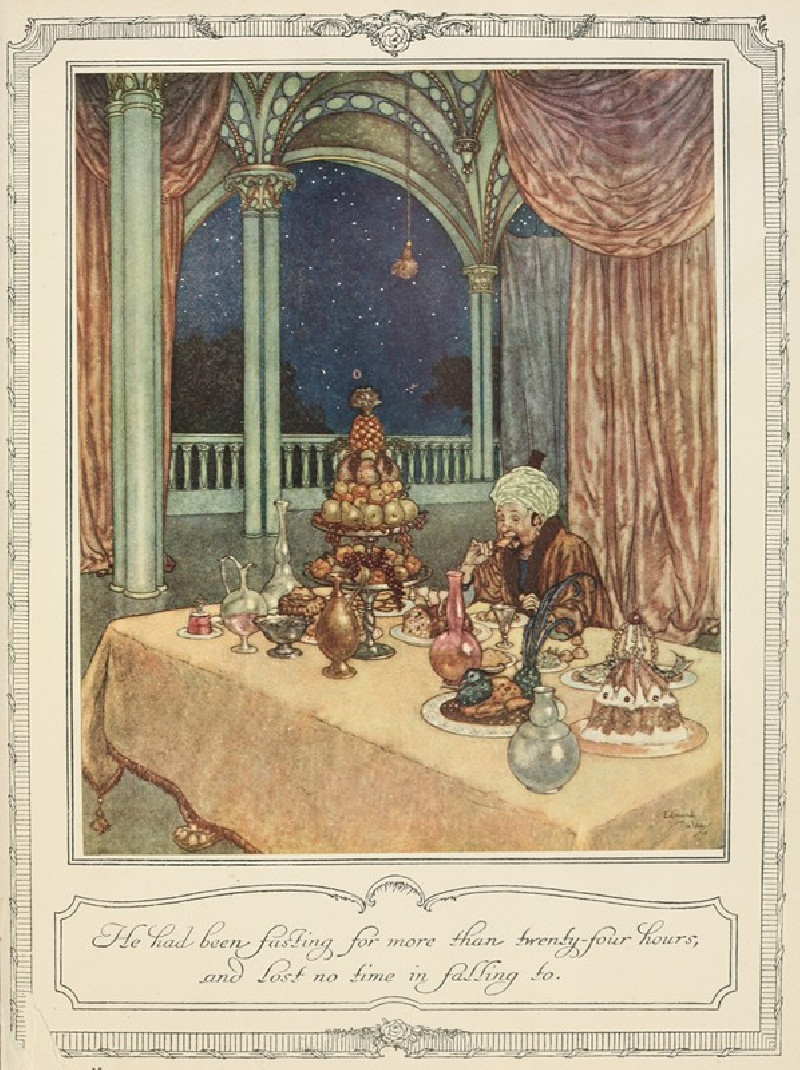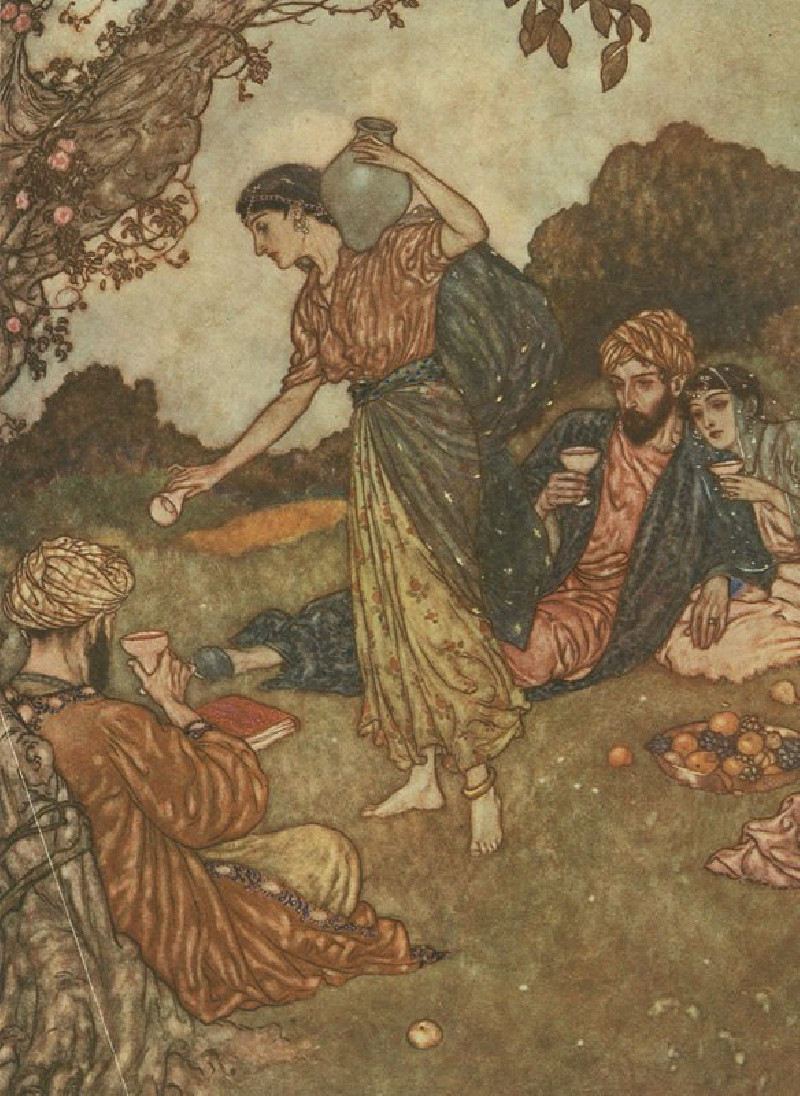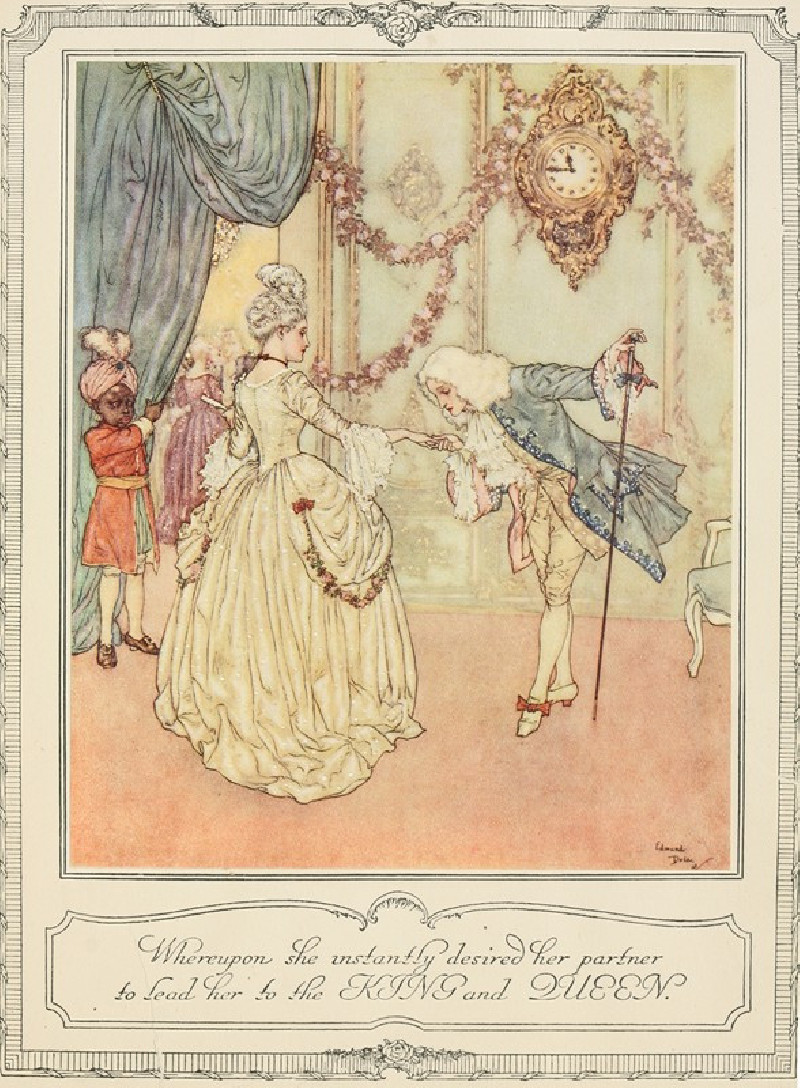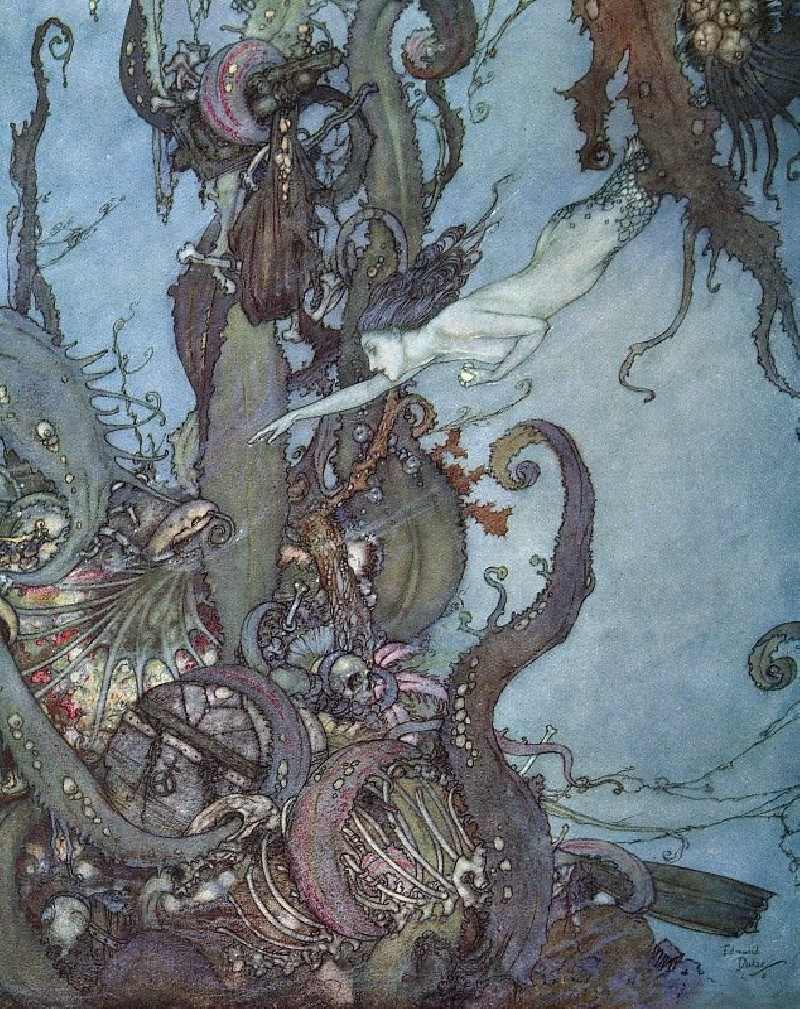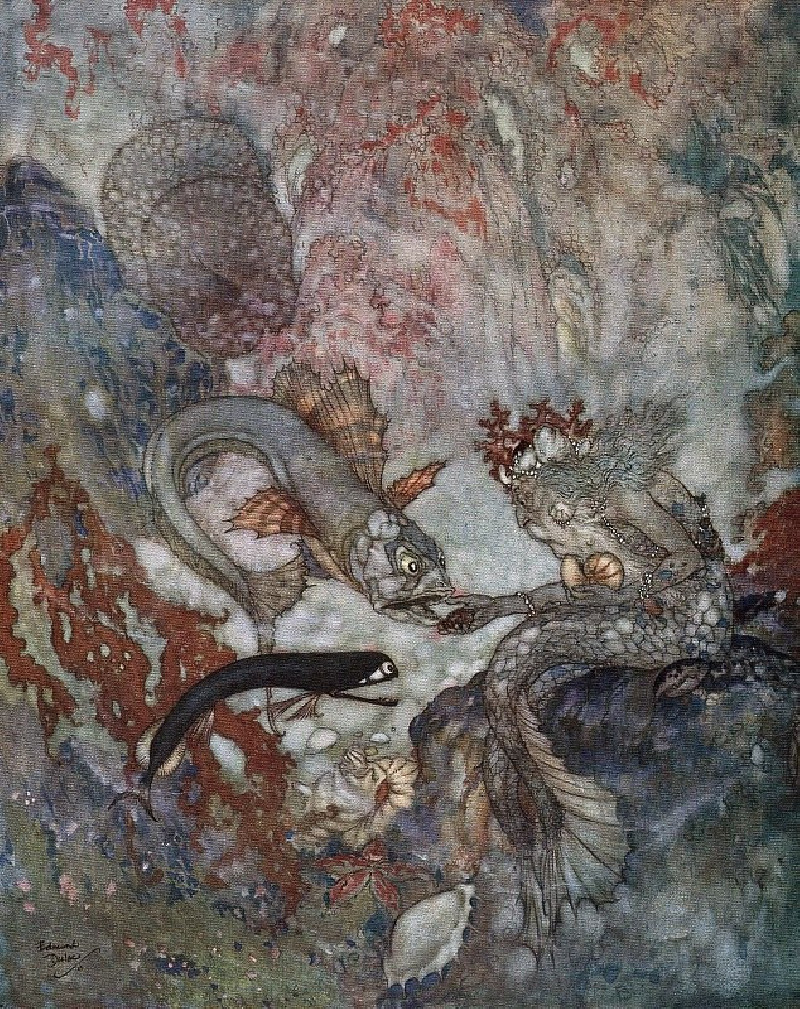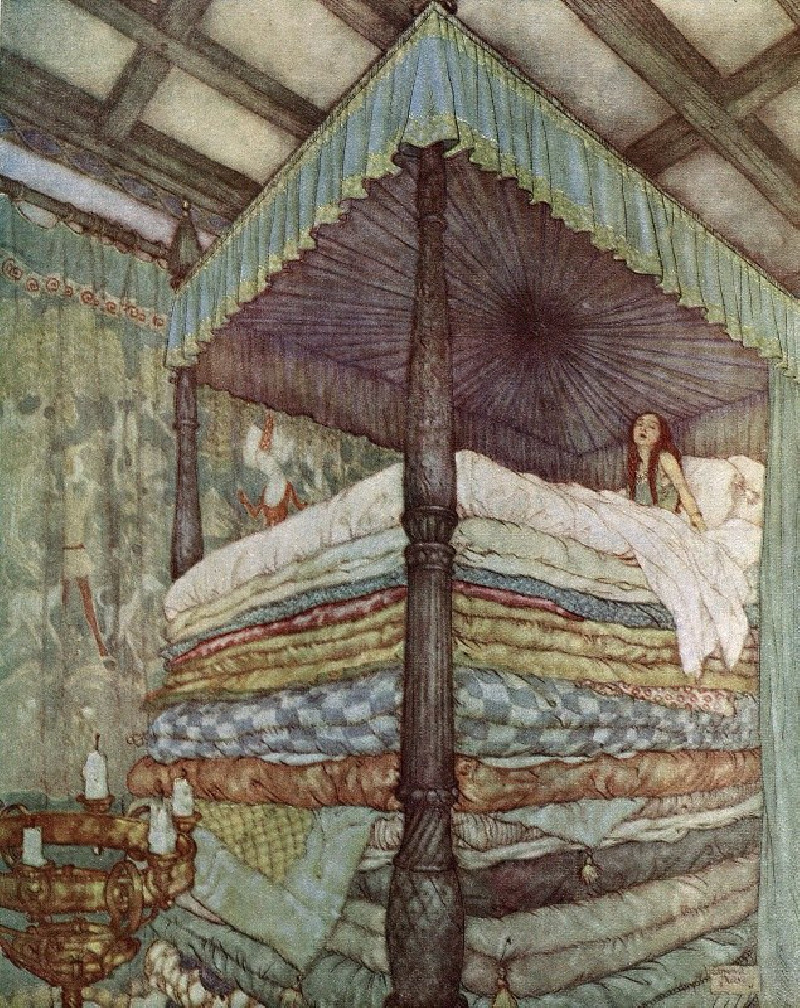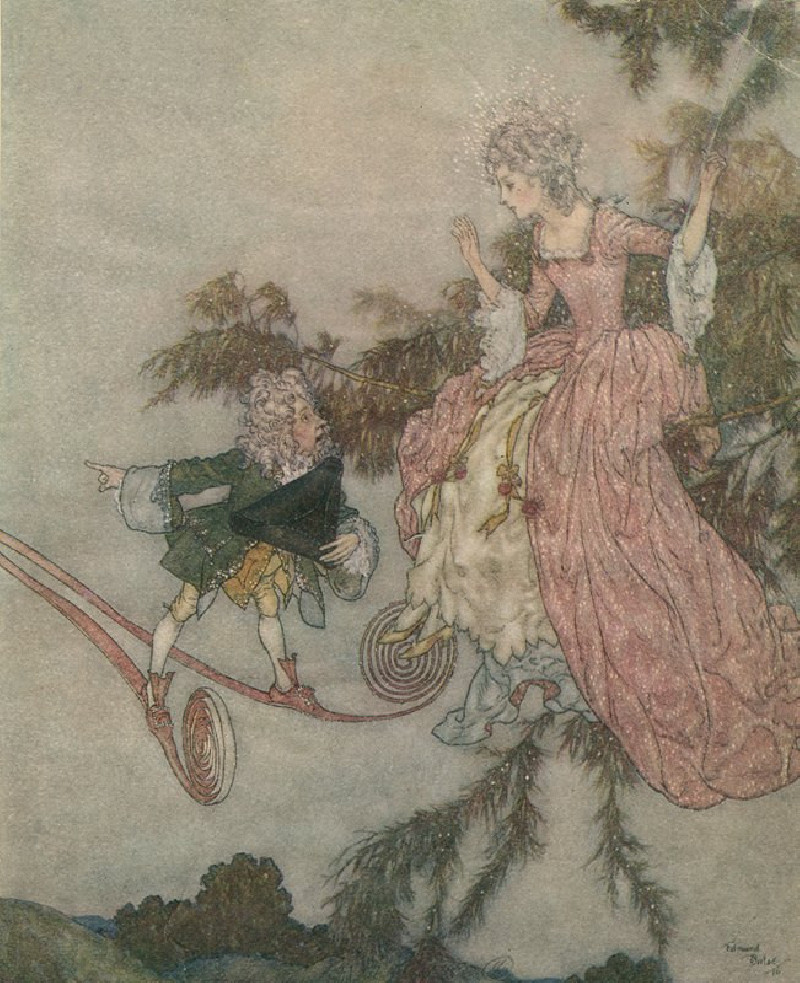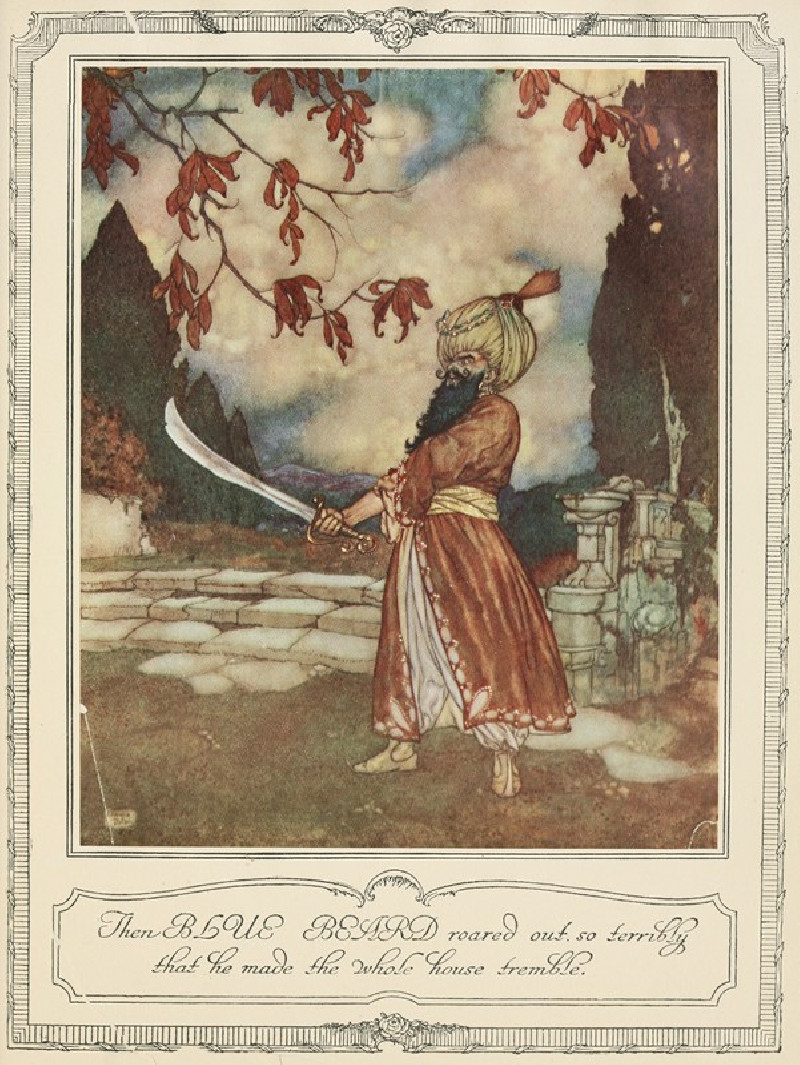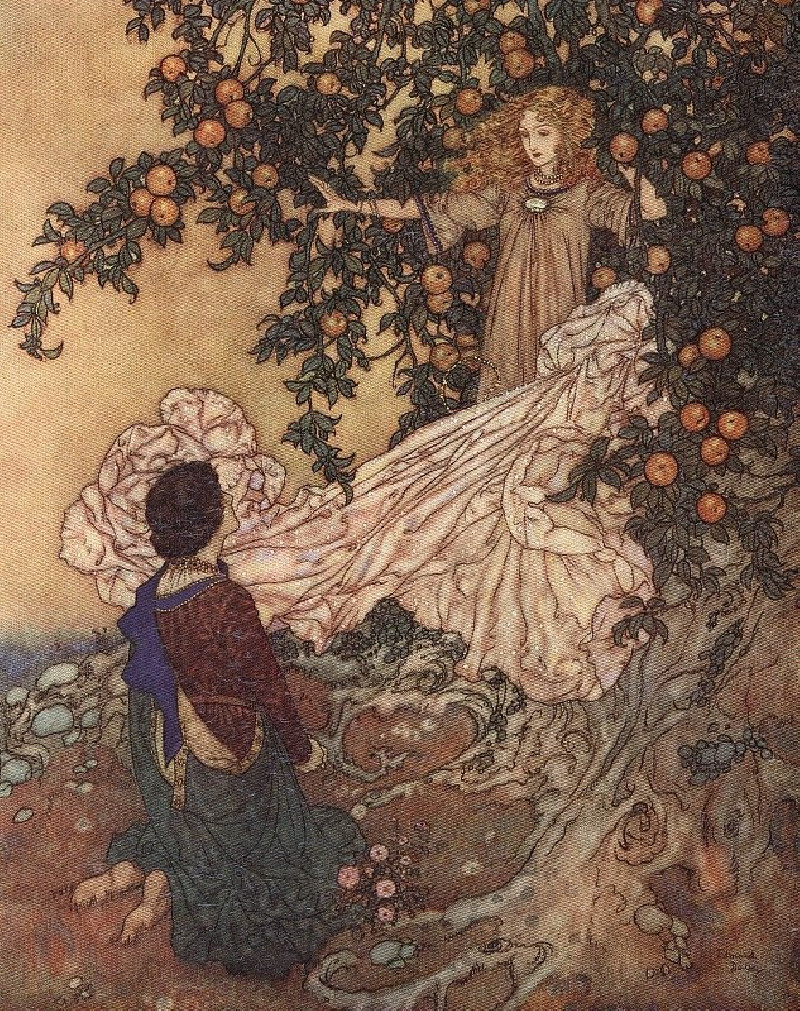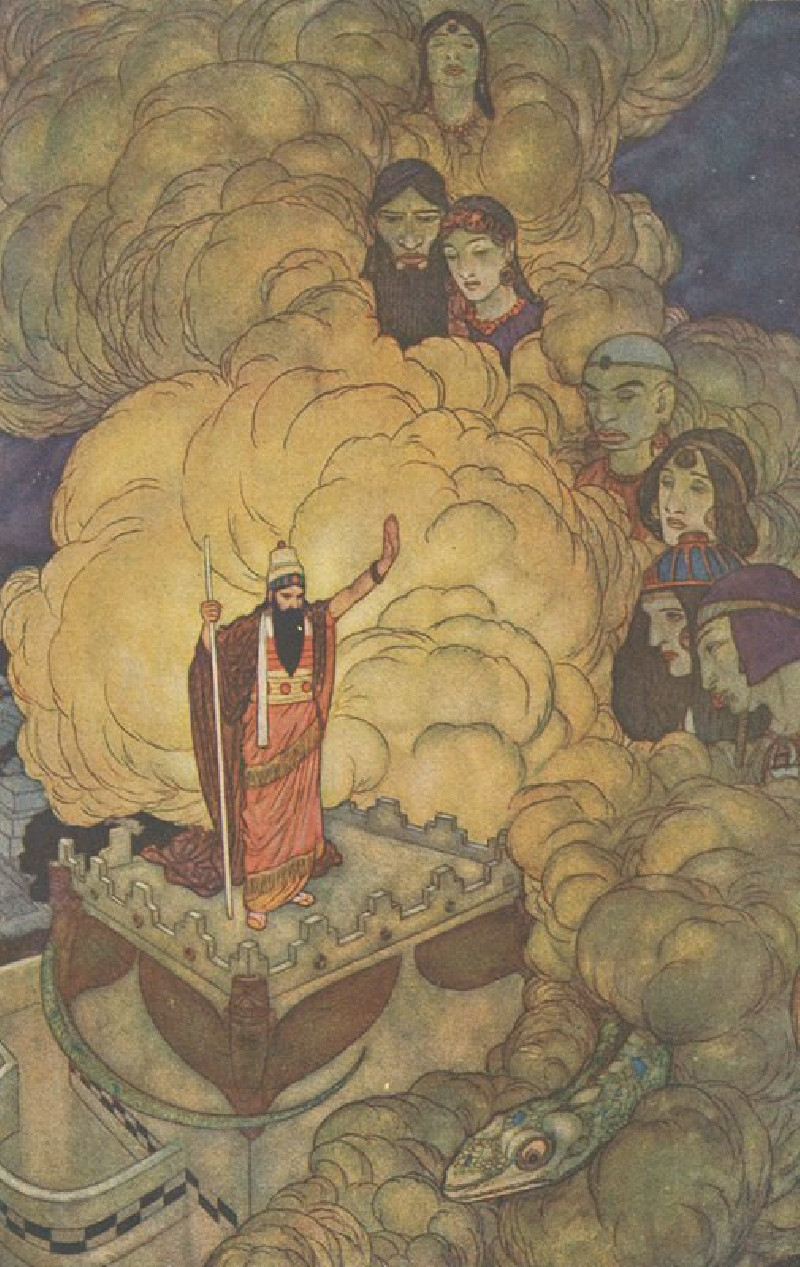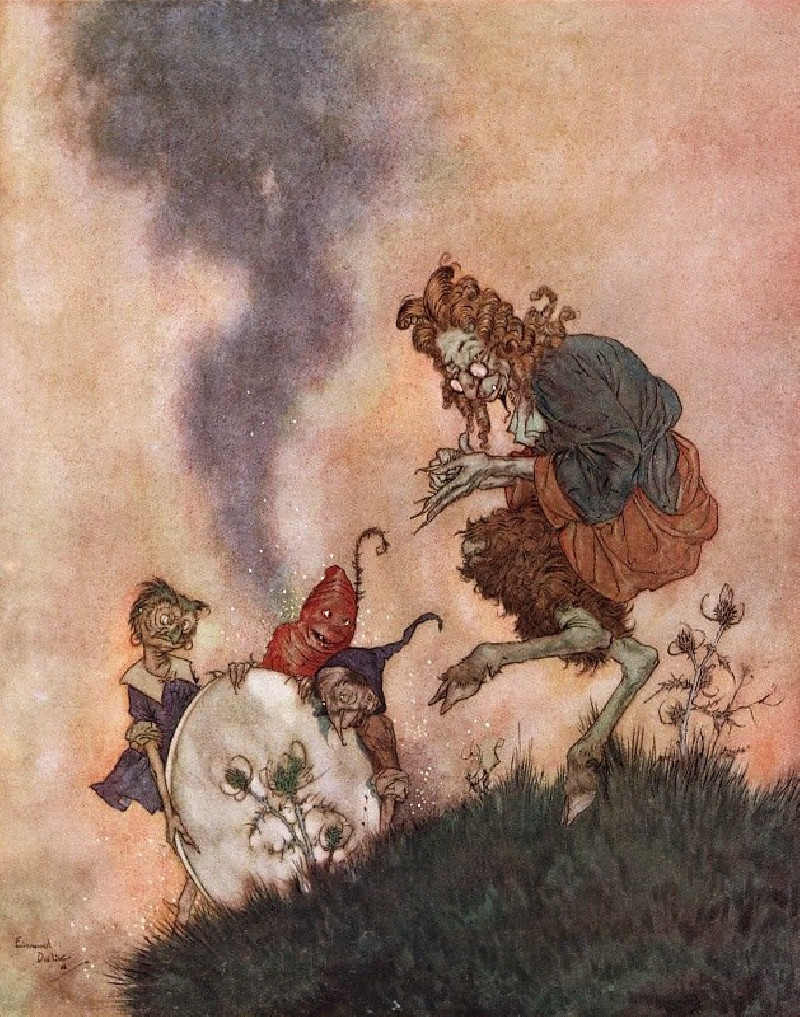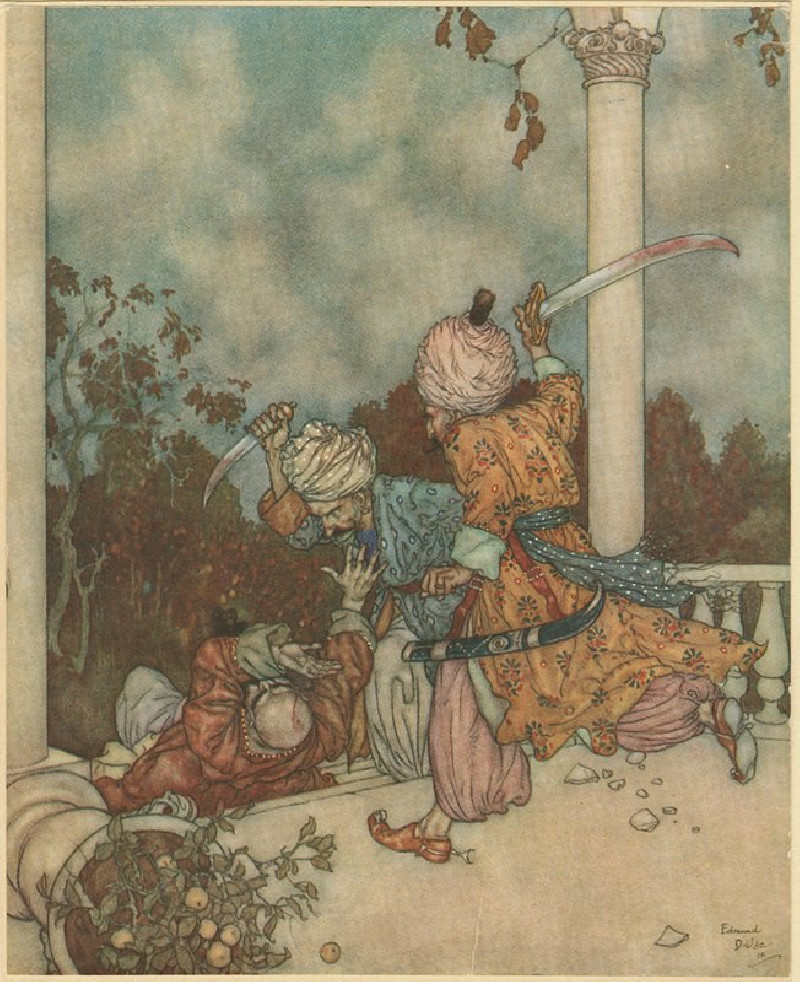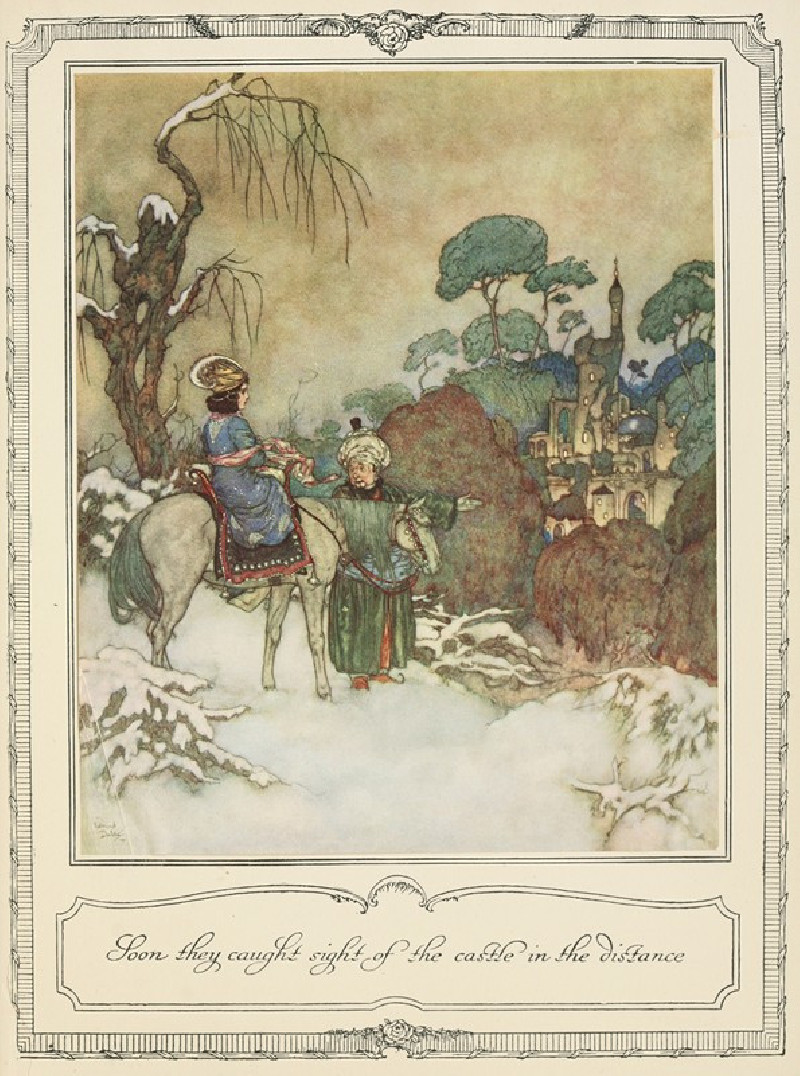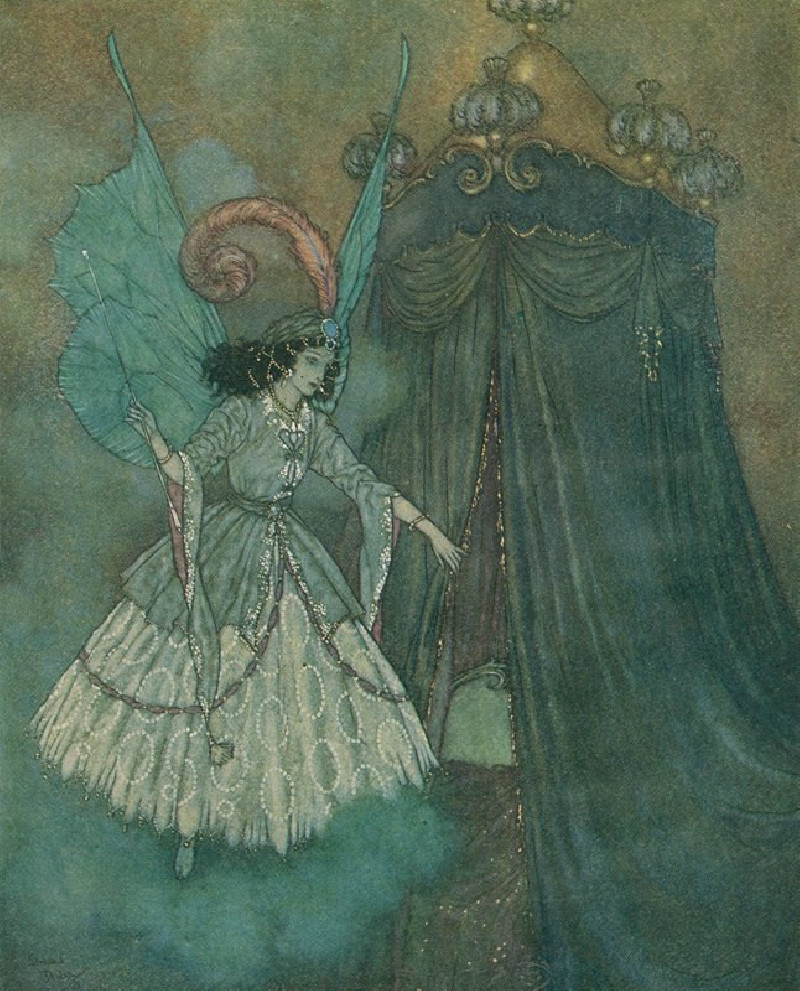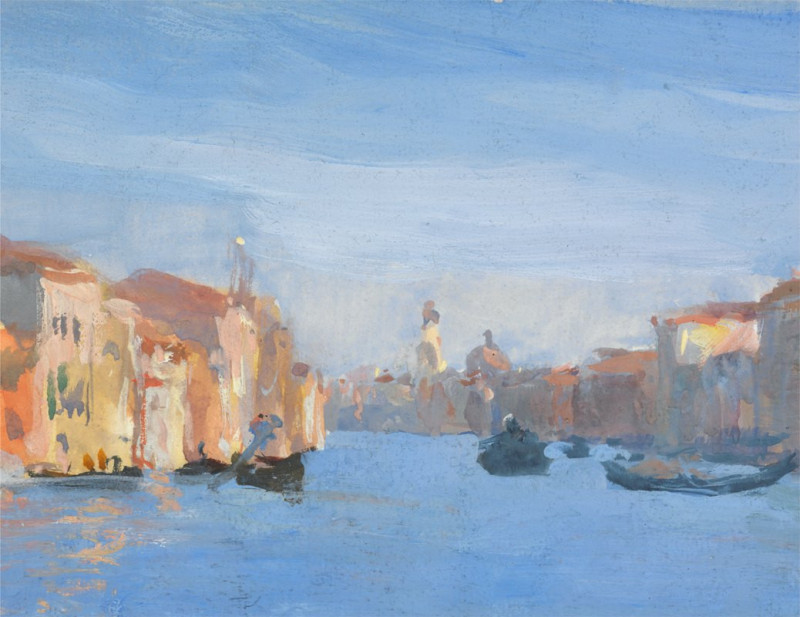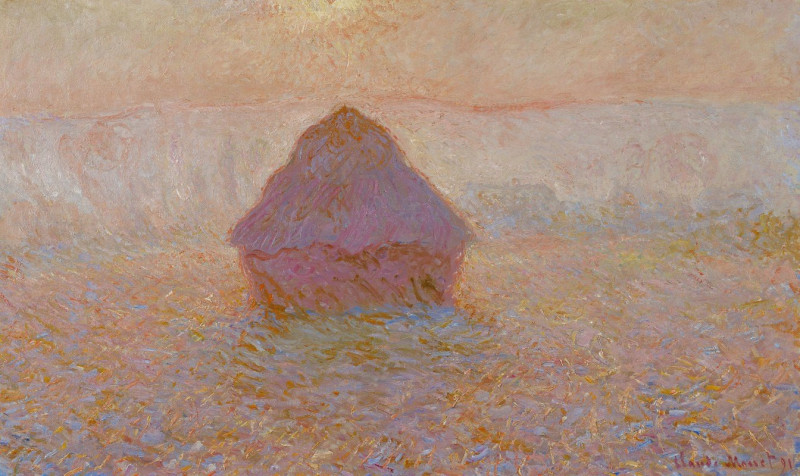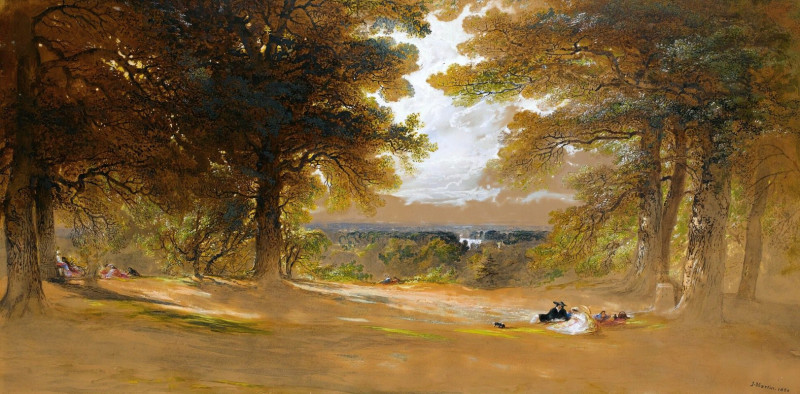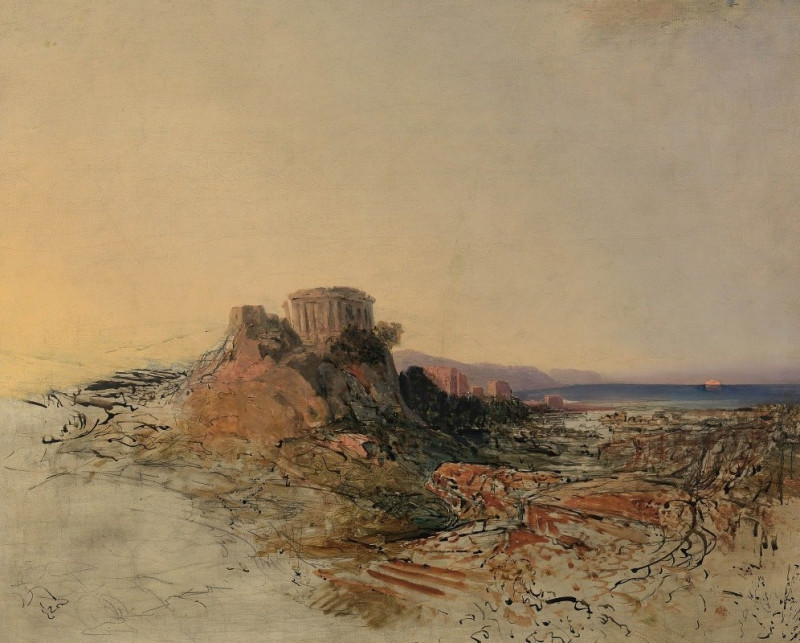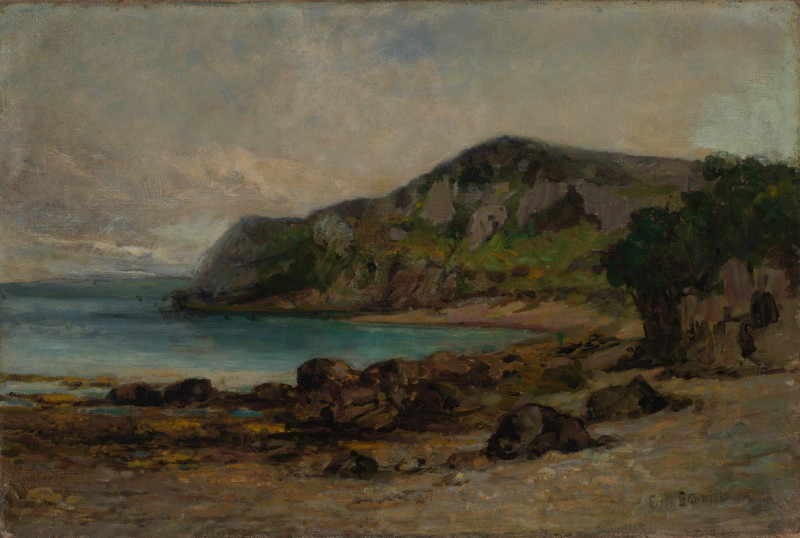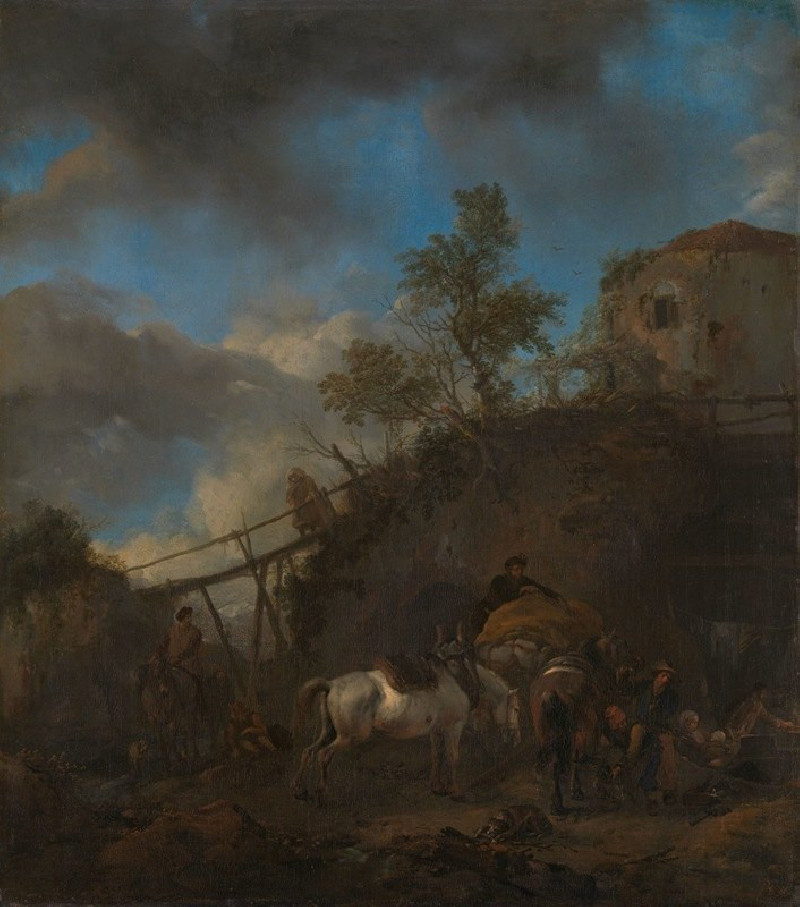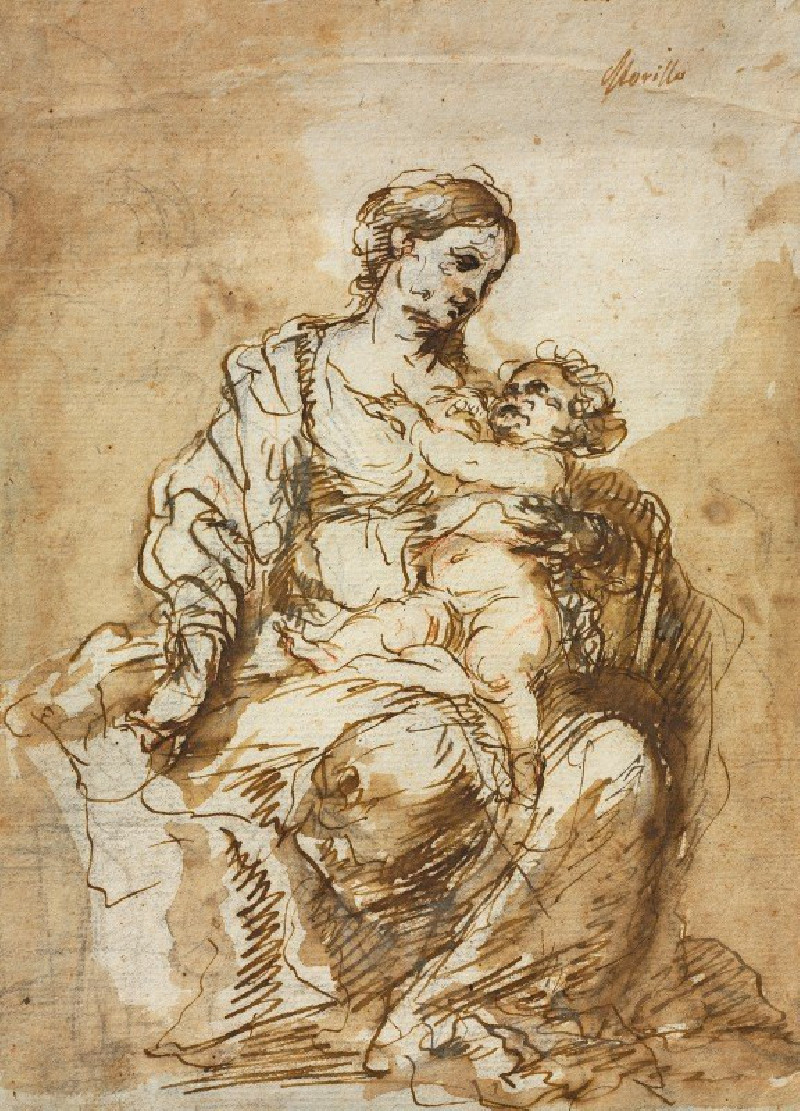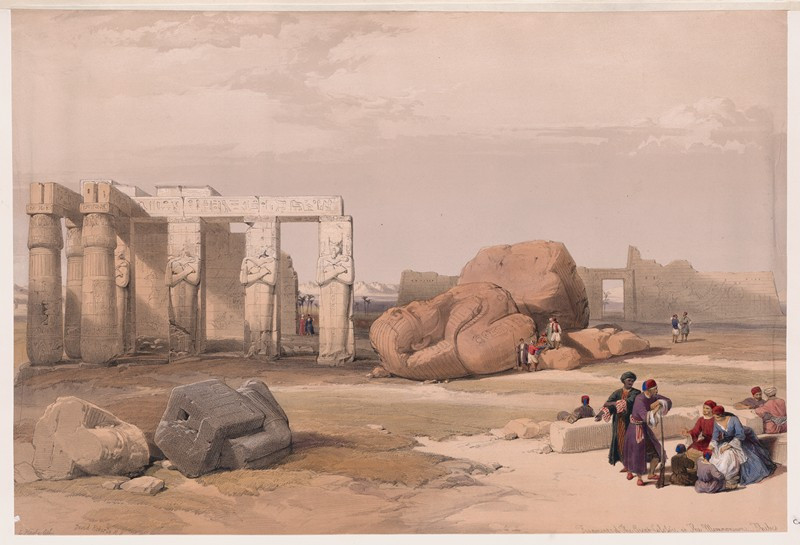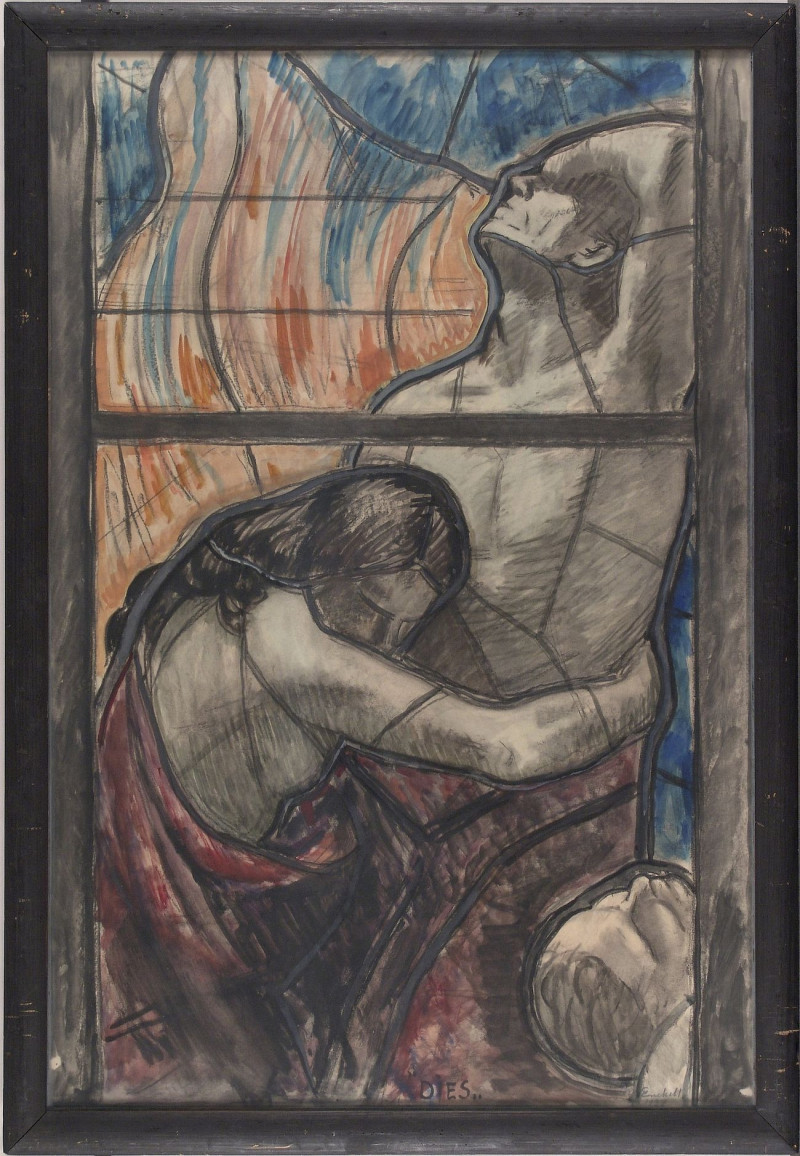And there, on a bed the curtains of which were drawn wide he beheld the loveliest vision he had ever seen (1910)
Technique: Giclée quality print
Recommended by our customers
More about this artwork
The painting "And there, on a bed the curtains of which were drawn wide, he beheld the loveliest vision he had ever seen," crafted by the renowned illustrator Edmund Dulac in 1910, transports its audience into a gorgeously detailed scene bursting with romance and enchantment. This imagery serves as an exquisite epiphany of beauty and surprise preserved in the delicate strokes and vibrant colors characteristic of Dulac's style.The painting depicts an intimate, luxuriously decorated bedroom, where the central focus is a large bed adorned with rich, flowing drapes and sumptuously patterned bedding. On the bed lies a group of figures; women dressed elegantly, their postures and expressions radiating an air of relaxed grace and aristocratic leisure. They appear to be in mid-conversation, caught by the viewer in a moment of private life.To the side of the bed stands a young man in ornate clothing, typical of the era Dulac often illustrated. His stance and expression convey a mix of awe and admiration as he gazes upon the women, suggesting he has just entered the room. Behind him, another figure seems to be peeking in, adding to the narrative intrigue and the sense of this moment being a secretive glimpse into a private world.Tactile details like the deep, rich colors of the room, the delicate patterns on the fabrics, and the soft, diffused light that highlights the expressions and textures lend to the dreamlike quality of the scene. The composition draws viewers into this quiet yet emotionally charged episode, letting them feel the warmth and luxury of the setting, and the subtle dynamics between the characters.
Delivery
Returns
Edmund Dulac (born Edmond Dulac; 22 October 1882 – 25 May 1953) was a French-British naturalised magazine illustrator, book illustrator and stamp designer. Born in Toulouse he studied law but later turned to the study of art at the École des Beaux-Arts. He moved to London early in the 20th century and in 1905 received his first commission to illustrate the novels of the Brontë Sisters. During World War I, Dulac produced relief books and when after the war the deluxe children's book market shrank he turned to magazine illustrations among other ventures. He designed banknotes during World War II and postage stamps, most notably those that heralded the beginning of Queen Elizabeth II's reign.



